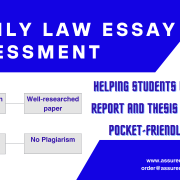This is an individual assignment – complete both tasks 1 and 2
Background: The assignment is intended to bring out the benefits and limitations of different approaches to project planning and control by relating these to the circumstances in the case outlined. It is also intended to allow students to demonstrate their learning and competence in respect of the management of resources generally, but in particular elements of scope, schedule, quality, and cost.
Task 1 (40% marks) 700 words (+/- 10%) each short answer question requires a response in a few sentences for the questions awarded up to 4-6 marks and a paragraph for questions awarded up to 8-10 marks.
1) Projects are normally catergorised into different types. Define each type and give examples of each type of project? (8 marks).
2) What would you include in your managing scope statement? What tool could you use to show the subdivision of the scope of work? (6 marks).
3) Using the information below, plot out a full project Gantt chart and identify the critical path? How many days does it take to complete the project? What are the benefits of using a Gantt chart? (6 marks).
4) How would you decide if a project had been successful? (4marks).
5) How would you assess and manage the risks on a project. (6marks).
6) What is Project Quality Management? What does it consist of? (10marks).
Task 2: (60% marks) (2,300 words +/- 10%).
Case Study: Watson PLC is a British leisure company specialising in the provision and operation of private health and fitness clubs. They opened their first club in 1994, and they have subsequently opened a further 24 clubs within the UK. These clubs all incorporate: a 25 x 12 metre swimming pool, a fitness facility, a Health studio (including a Spa, with a sauna and steam room), 3 aerobic/dance studios, two meeting rooms, and a small cafeteria/bar loungearea.
Watson PLC is going to open a new club which will incorporate new facilities and services. The new club will be larger than Watson’s PLC’s existing clubs. This is due to the additions of a small 100 seat cinema, and an extensive beauty spa. The beauty spa will have a vast range of treatments and services available including: hairdressing, massage, and cosmetic treatment. The new club has an investment of £1 million pound and is due to take 48 weeks to complete.
As project manager appointed by Watson PLC at the feasibility stage, you are required to prepare a report (2,300 +/- 10% words). From a project management perspective outline the activities required to successfully manage this new
initiative, ensuring that it is on time, and within budget.
The analysis should include the skills and competencies required by the Project Manager, along with the project management process. Use examples of the concerns, Project Life Cycle stages, processes, leadership, and administration and control problems associated with managing the lifecycle of this major project.
The answers to both tasks are independent and should be addressed separately.
Task 1 answers to six questions – (700 words +/- 10%) – completed as an
individual task
Task 2 a report that is produced for task two (2300 words +/- 10%) – completed as an individual task
For your convenience both tasks should be submitted as one document, which contains both individual tasks.
The criteria for assessing the task two report will be:
Report presentation (20%) (12 marks)
The extent to which the assignment represents an effective report. This will be judged on:
Appearance: Is a word count included at the end of the report? Is it within the specified amount? Is the text double spaced?
Structure: Does the report follow the conventions of the format? Does it have a clear introduction, explaining how it answers the questions? Do the sections of the report develop ideas in a logical sequence? Are diagrams or other subsidiary information shown in appendices?
Spelling and grammar: Are all words spelled correctly and is the meaning of sentences clear?
Referencing: Have appropriate references been included in the report. Has a recognised referencing system been used for notation? (see relevant section in the Guide to Basic Study Skills)
Use of relevant theory (40%) (24 marks)
Has the right theoretical content been chosen as the basis for answering the questions? Is there evidence of the use of course notes and books? Is the theory that is selected significant to the questions?
Analysis (40%) (24 marks)
This measures the extent to which students develop a structured argument for the points they make, by combining relevant theory with the information provided in the questions.











